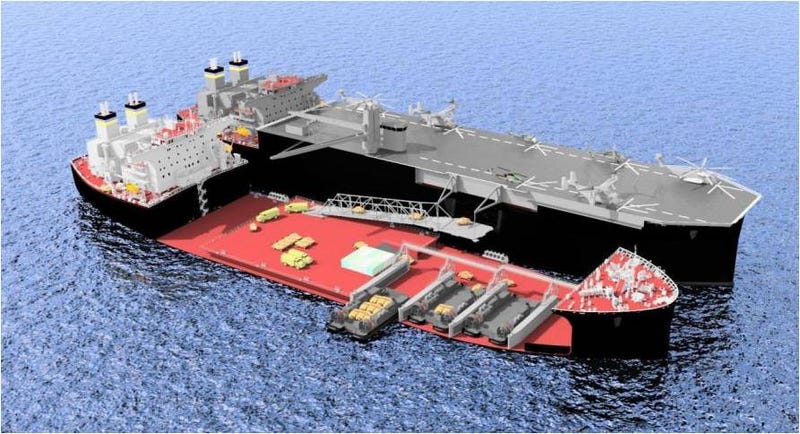And why not simply not have an army? If things go wrong, we could just snatch people off the street, give them guns and instruct them on the way while we get them to location on Air Canada planes!
I am jesting, of course, but I think you are missing the point, Chris.
These ships are not Very High Value targets because the marines are on board, they are VHVT because of the threat they represent to any enemy. Even without the Marines on board, they still cost 3.4 billion $US to build each and they still carry a huge amount of equipment to make opposed landings possible. That is enough to justify any enemy taking a serious crack at sinking them, even if the Marines aren't on board.
Moreover, where would you keep those Marines? Another country? Not likely. They'd be in the US somewhere.
So your JHSV or Chinook option to bring the Marines back (and BTW, it's not 600: the America class or Wasp class before them carry 1750 Marines - and are usually accompanied by two other amphibious ships each carrying 750 more Marines) have to pick them up in the US and deliver them where? Logic dictates the large deck phib would have to remain within their "range" prior to reconnection. And compared to the ocean size and the potential destinations, both the Chinooks and JHSV have a limited range.
In your plan, if something goes wrong somewhere on earth, the Marines would have to assemble at their base in the US, embark on their Chinooks, fly to the amphibious assault ship, which would have to be within the flying range (only 400 Nautical Miles) of the US, wait for all the airplanes, and I guess their crew and support personnel, to arrive, then sail at the phib's maximum speed (22 knots) to wherever on the planet they are needed. That is way, way, way too long.
A Marine Expeditionary Unit is the President's 911 force. When they are needed, they have to be there ... now. That is why the concept is forward deployment. At any given time four MEU(SOC) are forward deployed in areas where likely trouble spots are found, so they can be used quickly when the situation calls for it.
And while forward deployed, they don't need a huge escort situation, nor are they in danger from outside enemy until they are tasked to get close to shore for an operation.
I know we have satellite's galore, and new long range anti-ship weapons, etc. these days. But even with those, the oceans of the world - 2/3 of the planet's surface - are still the most wonderful hiding place ever. You are army, I believe, Chris. Think about it this way: If I gave you ten spy satellites and one hundred Search planes, and then asked you to find 5 main battle tanks and a couple dozen LAV's somewhere - anywhere - in Canada's whole land mass, and they are allowed to change location: how much time would you need? The answer is a heck of a lot of time, if you ever manage to spot them. That's what is protecting the phibs until they are called in: not "stealth' by ship design, but stealth by size of the hiding ground.










